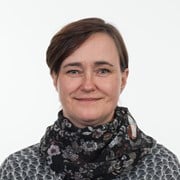SINMOD is a model system continuously developed at SINTEF since the early 80s. Results obtained using the model system have been published in more than 90 peer reviewed papers.
The hydrodynamic module is based on the Navier-Stokes equations, solved by the finite difference method on an Arakawa C-grid. Input to the model includes atmoshpheric forcing, freshwater run-off, and boundary conditions (density, tidal forcing, currents). A more detailed description of the model is found in Slagstad og McClimans (2005). The first SINMOD set-up was for the Barents Sea, but it has since been used in several areas around the world (Chile, New Zealand, Brasil). The spatial resolution varies according to the region and problem of interest, and may vary from 20 km to 32 m horizontally. Vertically, the model uses z layers.
A dynamic ecosystem module covering lower trophic levels run online with the hydrodynamic, module including an advanced stage-distributed population model for mesozooplankton (see Wassmann et al., 2011 and Alver et a., 2016 for more details). Other modules of SINMOD include a versatile particle transport model, a DEB type model for blue mussels (Handå et al., 2011) and a dynamic seaweed model (Broch et al., 2013).
- Estimation of water contact between aquaculture sites, dispersal of lice and viruses
- Estimation of dispersal and sedimentation of dissolved and particulate waste from aquaculture sites
- Estimation of current conditions for planning of maritime installations, aquaculture sites, bridge building, dredging and deposition of material
- Research on physical and biological processes in the ocean – primary production, zooplankton populations and growth potential for extractive aquaculture (e.g. seaweed and mussels)
- Research on the effect of climate change on primary and secondary production in the ocean


